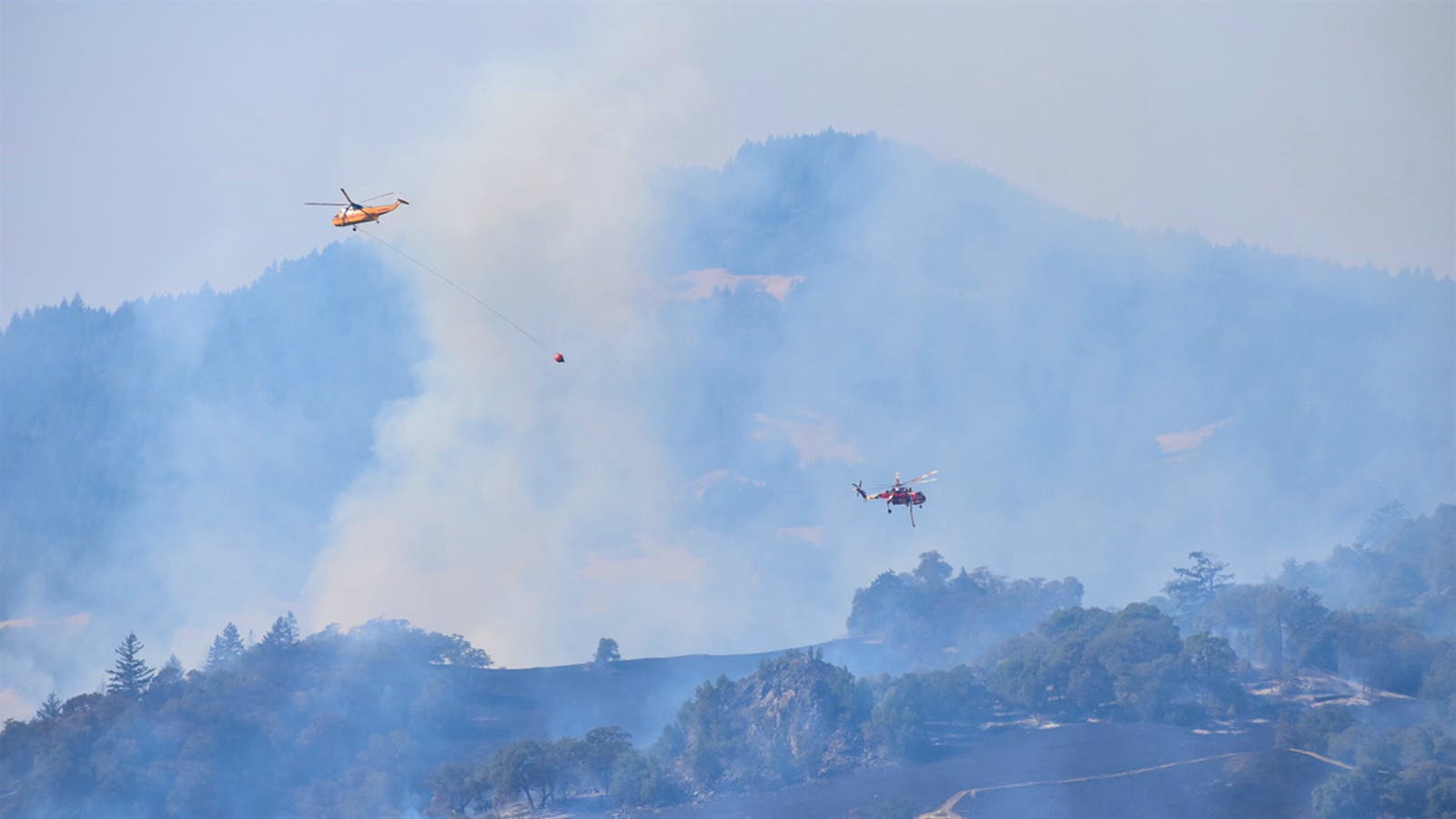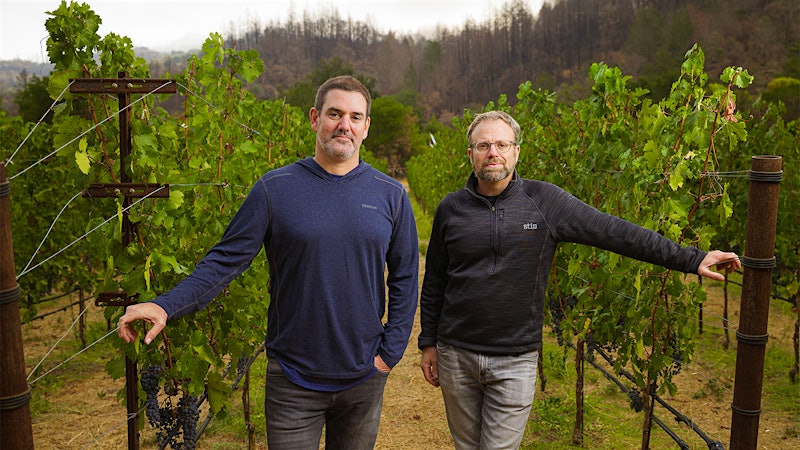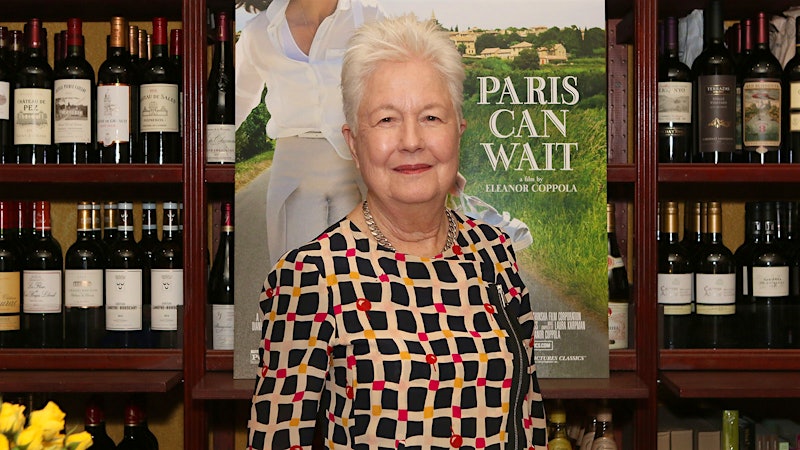For an updated understanding of the effects of smoke taint and how to deal with it, read our 2020 article, How Will Smoke Taint Affect the 2020 Vintage?
It's only been a few weeks since wildfires ravaged parts of Northern California and Spain and Portugal. Washington and Oregon have also suffered widespread fires this fall. The full extent of property damage has yet to be assessed, and recovery efforts are in full swing. But there's another concern in the backs of vintners' minds: How will the 2017 vintage be impacted by the clouds of smoke that blanketed vineyards for days?
Smoke taint can ruin a wine. There's no evidence it can make you sick, but the flavors associated with heavy smoke taint are enough to deter consumers from taking the risk on a wine that might be affected.
Of course, the problem of unpalatable wines pales in comparison to the devastation faced by some wineries, to say nothing of the families and businesses that have lost everything.
Fortunately for Northern California's 2017 vintage, most of the grapes had been harvested by the time the fires broke out there. Vintners in Spain's Galicia region report they had also finished harvest before the local fires ignited
However, for the California wineries that did have grapes exposed to the smoke—many of them prized, late-ripening reds like Cabernet Sauvignon—the threat of smoke taint looms. And as climate change continues to increase the chances for dry conditions prone to fast-spreading fires, researchers, vintners and consumers in different parts of the world are increasingly focusing on smoke taint, how to detect it and how to prevent it. Here's what we know so far.
What Is Smoke Taint?
The general consensus from those who've encountered smoke taint is that you'll know it when you taste it. It's not the typical smoky characteristics associated with wines aged in toasted oak barrels. Common descriptors for smoke-tainted wines include burnt, medicinal and campfire. "Smoke taint is pretty obvious," said Rick Davis, owner of Calstar Cellars in Santa Rosa, Calif. "The best descriptor I've heard for the flavor profile of a smoke-tainted wine was that if you're particularly fond of licking wet ash trays, you'll like this wine."
As its name may tell you, smoke taint happens when grapes are exposed to smoke, but it's more than just residue sitting on the grapes that cause these unpleasant flavors—and you can't just rinse it off. When wood burns, it releases aroma compounds called volatile phenols. In the vineyard, these compounds can permeate the grape skins and rapidly bond with the sugars inside to form molecules called glycosides.
This process, called glycosylation, renders the phenols no longer volatile, meaning their smokiness cannot be detected by smell or taste. However, once the grapes are fermented, the acidity in the resulting wine will begin to break these bonds, rendering the phenols volatile once again.
This typically happens during fermentation, but can continue to occur after the wine has been bottled. It can even happen right as you take a sip: The enzymes in your mouth are able to break down any glycosides that remain, and the undesirable aromas can be vaporized as you taste—a wine might smell fine but taste off.
Assessing the Risk, Dealing with the Damage
After the October fires, the air quality in California was so poor, people were concerned that the smoke could affect the already-picked grapes in fermentors. But according to Anita Oberholster, an enology specialist at the University of California at Davis, that's unlikely. "During fermentation these wines should have been protected due to a protective ‘blanket’ of carbon dioxide released during fermentation," she told Wine Spectator via email. "However, even if some volatile phenols from the smoke [are] absorbed in the wine, we do not expect any glycosylation to take place. So the problem of non-volatile precursors will not exist."
As for the grapes that were still hanging in the vineyards, there are myriad factors that can help winemakers predict whether they will end up with a flawed wine. According to the Australian Wine Research Institute (AWRI), risk of smoke taint is directly correlated with the stage of a grapevine's growth and development; research has shown that the period between veraison and harvest is when grapes are most susceptible.
It doesn't take long for this to happen: A 2008 study, conducted in part by Western Australia's Department of Agriculture and Food (DAFWA), found that even 30 minutes of heavy smoke exposure to grapes could cause smoke taint in subsequent wines.
You won't see smoke taint in white wines nearly as much as you would in reds, since the compounds are concentrated in the skins, and whites don't typically sit on their skins during fermentation like reds do. Are different red grape varieties more susceptible to taint? The wine industry is split. Some have claimed that varieties with thicker skins are more resistant (which would be better news for California's thick-skinned Cabernets), while others have nixed that idea.
According to Kerry Wilkinson, a leading researcher in smoke taint at Australia's University of Adelaide, there is some evidence that varieties do matter, but she has reservations. "Our results did suggest a varietal influence," she told Wine Spectator via email, noting that Cabernet Sauvignon was actually the most affected by taint. "However, I would stress our study involved the application of smoke to different varieties in only one or two seasons and did not compare regions, so there could be other confounding factors."
Research into methods for detecting smoke taint is ongoing. Researchers from UC Davis and Washington State University, two of the leading enology programs in the United States, are currently investigating ways to evaluate risk of smoke taint. However, Australian entities like the AWRI and the University of Adelaide are considered the world leaders in smoke taint and other fire-related winemaking issues (bushfires are a way of life for the Australian wine industry).
Currently, winemakers can send samples of grapes and juice to research institutions or private companies, where they will be tested for volatile phenols such as guaiacol and 4-methylguaiacol, two of the most common markers of smoke taint. Low levels of these compounds (typically lower than 5 micrograms per liter) naturally exist in wines; oak-aged, non-tainted wines can have even more.
Though we know high levels of these compounds will indicate smoke taint, there is no threshold level that will definitely signal that. "It is really difficult to predict smoke taint from volatile phenol levels in the grapes … it depends how much of this gets released during winemaking," said Oberholster. "Additionally … sometimes smoke taint or smoky characters are identified in the wine even though all the individual compounds are below their odor-threshold levels. This suggests a synergistic effect and that there are potentially additional compounds contributing to the character that we still need to identify."
In short, tests can be good indicators that smoke taint may be present, but they are not a guarantee it's not. Davis, who dealt with smoke taint after the 2008 fires in Northern California, put it this way: "You don't know until you know."
What Can Winemakers Do?
Among all this uncertainty, what can winemakers do to mitigate these unwanted flavors? The first step, which seems to be universally recommended, is to minimize contact with grape skins since, again, that is where the compounds are concentrated. Beyond that, researchers suggest a variety of practices, such as adding fining agents like activated carbon, and using reverse osmosis or solid phase extraction techniques to reduce smoke-derived volatile phenols. However, none of these methods are perfect, and seemingly eradicated taint can sometimes resurface.
Winemakers may opt to simply maximize other flavors in hopes of masking the smoke: Certain strains of yeast will highlight a wine's fruity characteristics, while using oak chips and adding tannins can further overpower smokiness. Others may choose to blend their tainted wine with their unaffected supply, but this risks ruining all of it and, according to Davis, has only been successful with very small amounts of tainted wine.
Some producers who aren't willing to risk their reputation (and customer base) will end up either bottling their affected wine as a separate label or selling the juice to a bulk supplier. Others might dump the ruined stock altogether.
California winemakers looking for answers could look south. At the beginning of this year, Chile suffered some of the worst wildfires in its history, in the middle of veraison. At Miguel Torres, 12 acres of vineyards burned, with many other vines close enough to the smoke for grapes to be influenced by it.
Technical manager Fernando Almeda recalled the uncertainty when the fires were burning. How affected vineyards would be depended on the winds, which blew compounds toward the vines, he told Wine Spectator. The team realized soon enough that a Pinot Noir vineyard called Escaleras de Empedrado, source of one of their top cuvées, might have been impacted.
The winery team harvested the grapes from Escaleras de Empedrado and then performed micro-vinifications as a test, says Almeda. Ultimately, they decided not to produce a 2017 vintage of this wine. Depending on the degree of the problem, they might sell the wine off in bulk or simply scrap the lot.
Another concern was their sparkling wine, which is made from País grapes that were close to the fires. Because smoke-taint compounds are mainly carried in the skins, the gentle pressing of the juice with minimal skin contact appears to have prevented problems; however, around 30 percent of the grapes were still deemed unusable for the bubbly.
Looking Ahead
It's still too early to know how California's fires will impact the vintage, but most in the industry remain optimistic. And luckily, there's no evidence that smoke taint stays in the vines to carry volatile phenols into the next year. "That was everybody's paranoia in the '08 vintage in Anderson Valley, and I saw none of it in the '09 vintage," said Davis, whose winemaking and consulting credits include Halleck Vineyard and Londer Vineyards. "I think it's extremely unlikely that you're going to see any real carry over. It doesn't seem to be permanently part of the soil structure or plant structure. So I'm not in the least bit worried about that."
As for the the 2017 vintage, the jury is still out.
Additional reporting by Emma Balter












